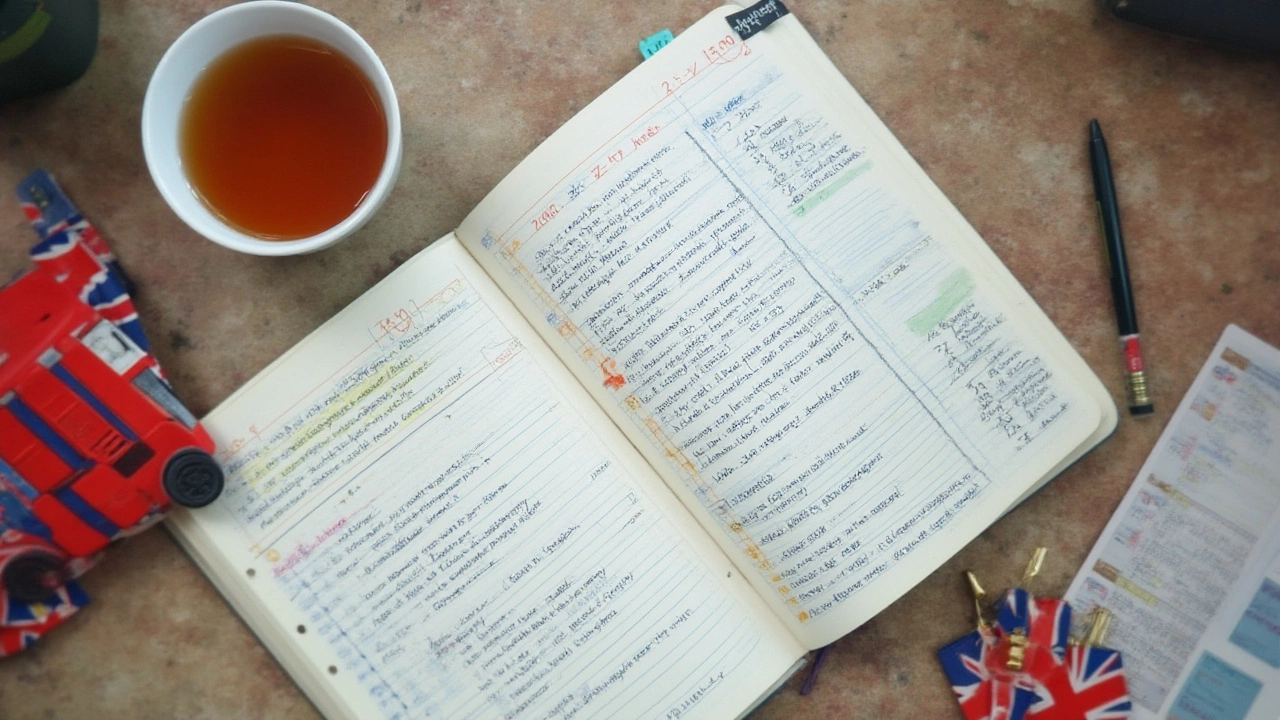-
18
- 0

2357 Revision Method: A Smart Approach to Effective Exam Preparation
Ever crammed for an exam and forgotten half of it days later? That brush with short-term memory is all too familiar—and it's exactly what the 2357 revision method was built to avoid. People have caught onto the idea that simply reading over notes once isn’t enough. But finding a balance between repetition and rest can feel weirdly tricky. The 2357 revision method pours a bit of science into your study rhythm, helping you hack how your brain really likes to learn.
Understanding the 2357 Revision Method
The name ‘2357’ isn’t some code or random countdown. It actually refers to when you should review your study material: the 2nd, 3rd, 5th, and 7th days after first learning something. The timeline is rooted in spaced repetition—a memory technique proven time and time again to actually stick stuff in your head. Spaced repetition works because our brains naturally forget things unless we put in a nudge at just the right moment, so the chance of long-term recall gets a boost each time we revisit info right before we’d normally forget.
So why those days? Studies point out that there’s a sweet spot where revisiting content brings the best payoff. Too soon, and it hasn’t sunk in; wait too long, and you've backtracked to square one. The 2357 approach spaces things out just enough so your memory gets tested, but not sabotaged. A research team at the University of California found that reviewing materials with this kind of rhythm improves retention over old-school cramming by up to 60%. And let’s be honest, that’s a crazy difference if you actually want your hard work to pay off in the real world, not just for one test.
Putting it into action is refreshingly straightforward. Let's say you’re studying the digestive system on a Monday. You’ll review those notes Tuesday (day 2), Wednesday (day 3), Friday (day 5), and Sunday (day 7). Each review session doesn't have to be long—sometimes you just skim. What's important is that you reengage your mind each time that natural ‘forgetting curve’ is about to dive.
Breaking Down Memory: Why Spacing Out Revision Matters
There’s something weirdly unfair about how quickly our brains shed information we thought we nailed yesterday. This annoying quirk is perfectly described by the ‘forgetting curve’—a concept first mapped out by scientist Hermann Ebbinghaus, way back in the 1800s. He learned that after learning something new, people forget about 70% of it in just 24 hours. Good luck recalling the capital of Zimbabwe after that time is up if you don’t touch the info again.
The 2357 revision method is like your brain’s rescue plan. Each time you go back, you haul lost concepts back into focus right before they slip away. By day 7, the brain treats the info as ‘oh, this matters’ so it moves from fragile short-term memory toward the longer-lasting, hard-drive part of memory. Neurologically, this process rewires tiny pathways in your mind—think of blazing a visible path through a field instead of walking somewhere new each time.
Here’s a cool bit: a study published in the journal ‘Memory’ showed that if you use short, targeted reviews timed out over 7 days (like the 2357 pattern), your recall jumps from barely half to almost 90% by month’s end. That means less slogging through forgotten stuff, more confidence come exam night.

How To Use the 2357 Revision Method: A Practical Guide
You don’t need fancy apps or color-coded planners, though go wild if that’s your style. You can make this work with a simple calendar, sticky notes, or a free online tracker.
- First, after your initial study session, jot down when your next reviews should be. Actual dates help—so if you started on July 18, your reviews happen July 19, 20, 22, and 24.
- Keep each session laser-focused. Spend ten minutes flipping through flashcards, testing yourself, or rewriting a summary. You’re not relearning every detail; you’re jogging your memory for the key points.
- Mix up your methods. Try explaining what you learned to your pet or an imaginary friend (I usually corner Milo for these impromptu lectures, though Cleo seems less impressed). The act of retrieving info out loud seals the deal way better than silent reading.
- If you skip a session, don’t scrap the plan—just pick up from where you left off. Flexibility is key; no one studies perfectly.
- Track your wins. Mark off each review day on your calendar. It gives a tiny dopamine hit and keeps you going.
Students prepping for big exams—GCSEs, A Levels, or uni finals—swear by this system. But I’ve seen it work for language learners, music practice, and knocking out work certifications, too. The structure frees you from the panic of last-minute overload, swapping stress for rhythm.
Tips, Tools, and Real-Life Experiences
Everyone’s brain is a bit different, so it’s worth personalizing how you use 2357. Gideon, who’s always been skeptical of anything labeled a ‘hack’, actually adapted 2357 for marathon training material—revisiting key drills and nutrition facts at the same intervals. For me, adding short quizzes at the start of each review builds in a quick confidence boost (and exposes blind spots fast).
Some low-cost ways to make 2357 stick:
- Set up digital reminders using your favorite app. Google Calendar, Notion, or even simple phone alarms can give you a nudge when it’s time to review.
- Study groups can work wonders. Share the 2357 approach and hold each other accountable. A little friendly rivalry for who sticks with the habit can help.
- Visual learners might layer in color-coding each revision day, creating a pattern or rainbow through their notes. It sounds silly, but studies show color improves recall by 25% for some people.
- If written notes feel tired, switch up the format—a voice memo recap, quick doodle, or even sticky notes on the bathroom mirror brings fresh energy to reviews.
Common hurdles? The most predictable one: life gets busy. Don’t stress missing a day. A study at King’s College London found that ‘near-miss compliance’—so missing one date but keeping the momentum—still preserves most of the benefit. The other headache is boredom. That’s where switching up the format, topics, or even time of day (try revising with a coffee at sunrise, or a tea at dusk) sparks engagement.

Frequently Asked Questions About the 2357 Revision Method
2357 revision method doesn’t demand perfection, just a bit of grit. People ask if it works for all subjects—math, science, history. Honestly, it’s solid for any content that requires remembering, not just understanding. Do I have to follow 2-3-5-7 exactly? No rule police will turn up if you tweak it—some stretch to 2-4-6-8 days, depending on comfort or exam dates.
It’s also fair to ask: isn’t reviewing four times in a week overkill? Not really—because sessions are short, and each one catches your brain right before you lose ground. Evidence from Cambridge backs this up: students using brief but perfectly spaced repeats remembered double compared to those who studied longer but more randomly.
How do I fit this around sports, work, and everything else? Flex those sessions. Don’t aim for marathon study blocks. Ten to fifteen minutes is enough. And to keep motivation up, tie review days to rewards—slice of cake, a walk with Milo, even sharing what you learned with your best friend or, in my case, a slightly bemused spouse at dinner.
Another classic question: does this only work for the young, or for people who say their memory ‘isn’t what it used to be’? Good news—age isn’t a barrier. Research from the University of Auckland tested retirees learning a new skill (yes, knitting counts) and found the 2357 method boosted results just as well as it did for undergrads. The trick is regularity, not age.
Write a comment
Tags Weight
- education
- study tips
- adult education
- exam preparation
- online courses
- adult learning
- lifelong learning
- distance learning
- GCSE revision
- online education
- private tutoring
- special needs education
- scholarships
- remote learning
- scholarship tips
- financial aid
- international students
- effective learning
- e-learning
- education funding

Written by Elara Winslow
View all posts by: Elara Winslow